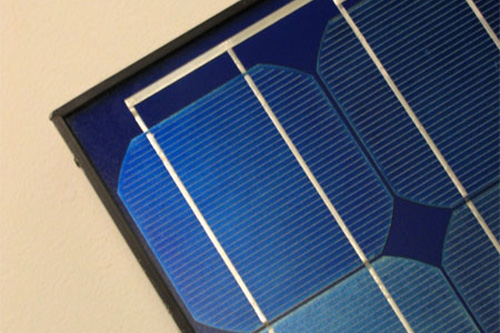
Advances in solar energy efficiencies have so far been made with irregular surfaces, thinner tabbing between cells, more optically perfect glass and even special coatings, but now Stanford engineers say the best efficiency is via ultra-thin polymer films inside solar cells that allow more “bounce room.”
Add to that a slightly rougher surface, such as is achieved with black silicon, and efficiencies begin to approach a rating that is 10 times more than conventional wisdom suggests is possible.
What does conventional wisdom suggest? First, solar cell efficiencies are proscribed by the materials used; that is, each material, or combination, has a natural band gap, or filter, which prevents certain wavelengths of radiant energy from being absorbed and used.
Efficiency is also hampered by electrical resistance in the semiconductor, in the wiring that connects with the inverter, and in the inverter itself.
Where Stanford scientists have triumphed is in keeping the photons inside the solar cell long enough to extract the maximum energy available. As Shanhui Fan, associate professor of electrical engineering, said, “The longer a photon is in the cell, the better chance it will get absorbed.” (People who feed mice to snakes already understand this principle, unfortunately).
During the final week in September, in
Proceedings of the
National Academy of Sciences (PNAS), Fan talked to a Stanford
University reporter and noted the dual nature of photons, which can
exhibit as particles or waves (the famous “double-slit experiment
documented by Thomas Young).
This led, naturally, to an experiment in which Fan and postdoctoral researcher Zongfu Yu (the lead author of the PNAS paper) tried to determine if the conventional limits also held true at the nanoscale level.
Without getting into confusing detail, it seems that light at ‘subwavelength’ scales (Yu’s word) can be confined for longer periods of time than light at the macro level, thus also extending the energy absorption rates and efficiency.
The final material arrangement Yu arrived at, which consisted of organic thin film between two “cladding layers” with a single, rough layer, achieved a 12-fold increase in solar efficiency after the parameters of the various layers were adjusted according to mathematical simulations made beforehand.
Of course, neither Yu nor Fan are revealing the precise formula, but Fan admits that, if one does it “right,” there is enormous potential for solar cell efficiency that could lead to vast improvements throughout the solar industry.
Photo Credit: Rob Pongsajapan & Lee Brimelow via Flickr CC
Posted on September 30th in Solar Research by Jeanne.
Copyright © 2011 CalFinder Contractors. All rights reserved.
http://solar.calfinder.com/blog/solar-research/stanford-solar-cells/